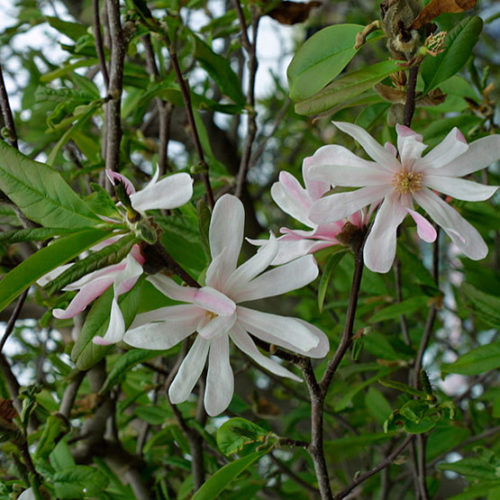
This rounded, small tree grows to 25 feet tall. It is a cross of M. kobus and M. stellata ‘Rosea’. It has star-shaped flowers with 12 narrow petals, white on the inside and purplish-pink on the outside; the transition of color from bud to bloom is a beautiful study in color. The blossoms are fragrant and appear before the leaves in early to mid-spring.
Noteworthy Characteristics.
CareGrow in moist, well-drained, preferably acidic to neutral soil in sun or partial shade; magnolias do not tolerate wet feet. Magnolia flowerbuds are susceptible to late-season frosts; shelter large-leaved species from windy locations. Prune in late winter or late summer to prevent bleeding of sap; prune minimally to maintain a healthy framework.
PropagationSow seeds in autumn or stratify to hasten germination. Root softwood cuttings in early summer. Magnolias can be layered in early spring, grafted in winter, and propagated by bud in summer.
ProblemsBacterial leaf spot, spot anthracnose, canker, dieback, butt rot, powdery mildew, anthracnose, fungal spots, weevils, snails, scale insects, thrips, planthoppers.
- Genus : Magnolia
- Plant Height : 15 to 30 feet
- Plant Width : 15 to 30 feet
- Zones : 5, 6, 7, 8, 9
- Characteristics : Fragrant Flowers, Showy Fruit
- Light : Full Sun to Partial Shade
- Maintenance : Low
- Moisture : Medium Moisture
- Growth Rate : Moderate
- Flower Color : Pink, White
- Bloom Time : Spring
- Plant Seasonal Interest : Spring Interest
- Plant Type : Trees



























